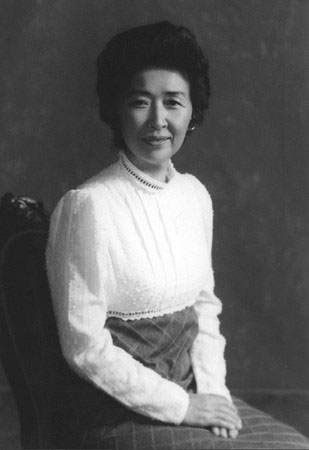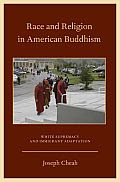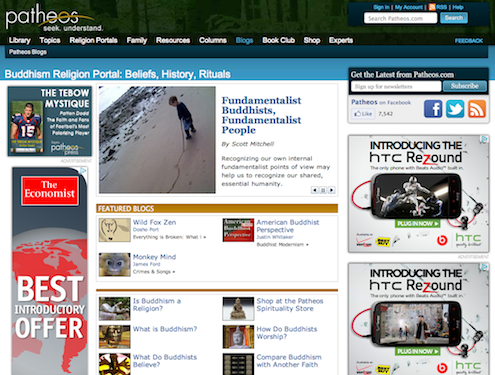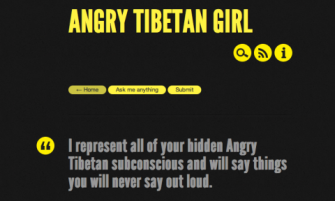This piece, “On Race and Buddhism,” first came to my attention while browsing the Buddhist Peace Fellowship website, but was later taken down when the site underwent a major redesign. In response to an appeal I broadcast, Ven. Kobutsu Malone was generous enough to contact the author, Hozan Alan Senauke, and forward me a copy of this essay. That was about two years ago.
It took me until this year to finally set aside the time to email Alan Senauke and receive his permission to post his essay on this blog. The author should be familiar to anyone long involved in the engaged Buddhist or Western Zen landscape; Senauke is a Zen priest ordained in the lineage of Shunryu Suzuki Roshi, has served as executive director of the Buddhist Peace Fellowship and also is the founder of the Clear View Project (which has its own blog).
This essay is also available in his recently published book The Bodhisattva’s Embrace: Dispatches from Engaged Buddhism’s Front Lines, which brings a Buddhist perspective to issues as wide ranging as globalization, poverty, militarism, race and privilege. (Full disclosure: I am borrowing heavily from Maia Duerr’s Amazon review here.)
I am delighted to share this essay below.
* * *
Zen Master Dogen wrote “Gourd with its tendrils is entwined with gourd.” This means we are all intimately bound up, wound up with each other. Truly inseparable. At Buddhist Peace Fellowship, San Francisco Zen Center, and at Berkeley Zen Center, we have been talking about the complexities of diversity, race, zen practice, and our communities in the United States. This is not just about “political correctness;” it is about practice and awareness. My own thoughts are not entirely clear. If I sound critical, it includes self-criticism. My own efforts have fallen short and I think we need to work on this together.
After six years of practice, homeless among householders, wayseekers, and mendicant teachers, the Buddha sat under the Bodhi Tree with the firm intention of awakening. After seven days he perceived the true nature of birth and death, the chain of causation, and awakened to realization with the morning star. At that moment he spoke these words: “Wondrous! I now see that all beings everywhere have the wisdom and virtues of the enlightened ones, but because of misunderstandings and attachments they do not realize it.”
Allowing his understanding to ripen, allowing Bodhicitta, the mind of compassion to ripen, he took up the responsibilities of teaching, sharing his experience in a way that unlocked the mystery of our own experience. As the Buddha came to express it, “I simply teach about the nature of suffering and the end of suffering.” This is a radical teaching. It goes to the root. His understanding that all beings everywhere have the wisdom and virtues of the enlightened ones leaves us today with a great responsibility. As the wheel of Mahayana Dharma turned, our own Zen vehicle, that responsibility was further clarified by the Bodhisattva vow to save all beings.
And yet this vow was there from the beginning. Why else did the Buddha rise from the comfort and joy of enlightenment and freedom to teach? Why else did he offer teachings like the “Metta Sutta,” where he says:
May all beings be happy.
May they be joyous and live in safety.
All living beings, whether weak or strong,
in high or middle or low realms of existence,
small or great, visible or invisible,
near or far, born or to be born,
let no one deceive another, nor despise any being in any state;
let none by anger or hatred wish harm to another.
Even as a mother at the risk of her life watches over
and protects her only child,
so with a boundless mind should one cherish all living things,
suffusing love over the entire world, above, below,
and all around, without limit;
so let one cultivate an infinite good will toward the whole world.
True to that teaching, he offered refuge to everyone he met on the path. Kings and paupers, ascetics and householders, people of all castes, brahmins , outcasts, and criminals. After some strenuous convincing, he even offered refuge to women. That’s a long story in itself, not unrelated to the issue at hand today. The Buddha’s reluctance reminds us that patriarchy has deep roots running through most cultures.
Taking refuge means committing your life to waking up, to taking on the problem of suffering and the ending suffering for all beings and ourselves. This is what zazen is about. Sitting upright in stillness means to see oneself in complete interdependence with all beings, with the rocks and trees and ocean and sky. The emptiness we so often talk about is not some kind of negative space. It is total interdependence. “Gourd with its tendrils entwined with gourd.” True reality is empty of any one thing, empty of self, because all things, all people co-create each other.
Seeing through and beyond dualistic thinking is the direct experience of zazen. I underscore the word ‘experience,’ because, if we are caught by our ideas or an idle wish, we slip back into the tide of duality. All of us have such experiences from moment to moment, time to time. A moment of merging with someone or something we love, a moment of doing something completely, a moment of losing oneself in meditation. At times in zazen we settle fully into the realm of nonduality and recognize that this is our true mind, our true state of being. All the great spiritual traditions express an understanding of this natural way of life.
By habit we see the world dualistically. Driven by doubt and fear, by a lack of trust in our true Mind, we see things as self and objects, as us and them, as other. It seems so hard to recognize the truth that Tibetan Buddhists teach: that every being was at one time my own mother. The root of racism is denial of this truth. It is about seeing people as other in a systemic way. It is such an entrenched habit we are not usually aware of. I would emphasize the word “systemic,” because ideas are like a virus in society. They have a power that goes beyond our individual like and dislike. Racism is a system of domination that is economic and political as well as personal. It runs deep in the oppressor and the oppressed alike, but the damage caused is different.
Even though I have the privilege of a good education, middle class male upbringing, white skin, I find in myself deeply ingrained survival responses as someone born a Jew. Several years ago at a meeting of international Buddhist activists in Thailand I realized that by evening of the first day I had figured out who among the westerners was Jewish. And I realized that all the Jews were doing the same thing and had “signified” to each other. We knew who each other was, and we were more comfortable for it. This, I am sure, is a pattern that goes back through centuries of ghetto life, of being seen as the other by a dominant culture. It’s not a genetic thing. I can still remember sitting in the den at home, my mother telling me how to watch out for myself at school. She explained that some people would exclude and threaten me just for being Jewish. It’s so deep that sometimes I often find myself looking around the zendo and counting those I think are Jewish. Some of you may find yourself making a similar census. I know that people of color do this.
But let’s remember where our Buddhism came from. Our ancestors come from India, China, and Japan. When I visit Suzuki Roshi’s temple in Japan, Rinso-in, I always walk in the graveyard where the old priests of the temple were buried. How amazing it is for Zen to leap oceans and cultures and be so generously offered to us. We should accept it humbly, recognizing the price of suffering paid to plant the Dharma seed here. We owe it to our teachers and ourselves to share this practice with the same generosity and openmindedness. Keep in mind that most Buddhists even in America don’t look like me. They are Chinese, Japanese, Thai, Vietnamese, and so on. I come to Buddhism out of suffering. They come to Buddhism by birth.
How does it feel to come to Zen practice as a person of color? And such people will come; they do come. My friend Sala Steinbach, an African-American practitioner at San Francisco Zen Center, says, “If it is about liberation, people of color will be interested.” They are. The Dalai Lama draws stadiums full of people in Mexico. In South America there are Zen and Tibetan teachers with very strong lay sanghas. I ask my Asian, and Latino, and African-American friends about how it feels to come here, to San Francisco Zen Center or Spirit Rock. And I ask myself what feelings come up to see these friends to walk through the doors . Dogen suggests that one take a step back to turn one’s light inward and illuminate oneself. What I see in myself is then reflected back into the world.
The answer to how it feels to anyone largely depends on two further inter-related questions. First, does one feel safe and seen in the community? Are the conditions of one’s life acknowledged, welcomed, explored in the sangha? I suspect the answer is sometimes yes, and too often no. Thoughtless words can turn people from the temple and from the practice. I have seen this happen. An offhand comment is made about how we are all white an middle class here, with people of color and working class friends sitting right there. When we unknowingly see through a lens of class and white supremacy, people are made to feel invisible and uncounted.
White supremacy is the cornerstone of racism, created out of blindness to one’s (my) own privilege as a white man. It is at once personal and systemic. If one wants to see white supremacy, the practice of turning our light inward needs to be blended with dialogue with friends and sangha members who don’t carry this very particular privilege.
The same kinds of painful things happen if you are homosexual, or if by reason of injury or fact of birth you can’t get up the steps of the temple. These blindnesses hurt and turn people away. That’s what it might feel like from one side.
On the other side, the Buddha’s understanding is “all beings have the wisdom and virtues of the enlightened ones, but because of misunderstandings and attachments they do not realize it.” This understanding is so precious that we are obligated to share it. I don’t mean crude proselytizing, but the Buddha himself never stopped preaching Dharma. Now we have centers and institutions for Dharma. To make zazen and Dharma available, we need to tell people they are welcome and invite them to practice with us. We must find ways to open our doors to those who can come to us. Some San Francisco churches have created a kind of covenant of “open congregation.” This means that in their literature and at their services, classes, and events they make it known that they welcome people of color, gays and lesbians, and so on. This is being pro-active rather than passive on questions of diversity and inclusion.
Already we are taking practice to jails and hospitals, to people who might not be able to come to the meditation hall. We can also take ourselves to mosques, churches, and synagogues, where we can meet with minsters and parishioners. If we make ourselves known there, we will be welcome, and people will appreciate that we have reached across various lines to witness their own practice.
This is necessary, because in America passivity means white supremacy. It is subtle and pervasive, conditioned by and conditioning our magazines, movies, tv, our clothing, all the things we buy. It is a virus infecting my own mind as a person with so-called privileges, and the mind of someone who might not have such privileges. Recently I was invited to talk about Buddhism and race to a diverse group of teenagers doing an interfaith social action internship in San Francisco. I hope I did a good job talking to them, but it was curious to me that I was the organizers first choice for a Buddhist speaker. The irony is that Buddhism in America gets defined as and by people who look like me, not by the far more numerous Asian and Asian-American practitioners.
But the wonderful thing about what the Buddha taught, what we can experience in zazen, is that each of us can go beyond duality. It can’t be done just by reason and talk. We have to uncover the reality of the world, which lives deep in our bones and then bring it back out into the world. We must be willing to make a lot of mistakes. Make our mistakes, learn the lessons and go back at it. The African American scholar/practitioner bell hooks writes about this in “Buddhist Women on the Edge”:
“In a culture of domination, preoccupation with victimhood and identity is inevitable. I once believed that progressive people could analyze the dualities and dissolve them through a process of dialectical critical exchange. Yet globally the resurgence of notions of ethnic purity, white supremacy, have led marginalized groups to cling to dualisms as a means of resistance….The willingness to surrender to attachment to duality is present in such thinking. It merely inverts the dualistic thinking that supports and maintains domination.
“Dualities serve their own interests. What’s alarming to me is to see so many Americans returning to those simplistic choices. People of all persuasions are feeling that if they don’t have dualism, they don’t have anything to hold on to.
If we are concerned with dissolving these apparent dualities we have to identify anchors to hold on to in the midst of fragmentation, in the midst of a loss of grounding. My anchor is love….”
I like to think that love and compassion are anchors of my practice. But they depend on mindfulness too. Zazen is rooted in mindfulness, breath after breath, thought after thought. This kind of training carries over into life outside the zendo. I try to uncover my own thought patterns. This is sometimes painful and embarrassing, but it is the essence of saving myself and all sentient beings. It is amazing to see the stories one can make up about other people, and how these stories are conditioned by race, or class, or privilege. Check it out for yourself. When you meet someone you consider different from yourself, do you think you know something about them? Do you think you might know the same kinds of things about another white person or someone more like you? This is a mindfulness practice, watching one’s thoughts about race, or any kind of difference. It is for our own sake, and not for the sake of political correctness. This is a very personal practice.
Then we can go further into our extended communities. Ask your friends of color how they experience the practice and the community. This is entering the realm of not knowing, risky, but completely necessary. In the wider Buddhist community, it might mean making excursions and visits to Asian Buddhist temples. They are friendly places. The same Dharma resides there, though it may take some different forms. We think nothing of going to restaurants featuring Asian cuisine.
When we have closely examined ourselves, and begun to look around and share our thoughts with others, then we have started to create the conditions for change. If our whole society could take such steps, it would be the start of a wonderful, hopeful era. Could there be racial peace for the first time in history? This is no pipe dream. It is the Bodhisattva Vow, the working of our Way Seeking Mind.
If each of us and the sanghas we cherish could nurture this process of mindfulness, the change could come much quicker. Compassion and peace could blossom in very surprising ways. And our life of zazen would be a golden wind blowing across a meadow of wildflowers.
* * *
Again, I am deeply grateful to Alan Senauke and Kobutsu Malone both for their correspondence over the years and for their contributions to ensure that this essay be shared. You can purchase a copy of Alan Senauke’s book, The Bodhisattva’s Embrace, which contains this essay, either here or here.




